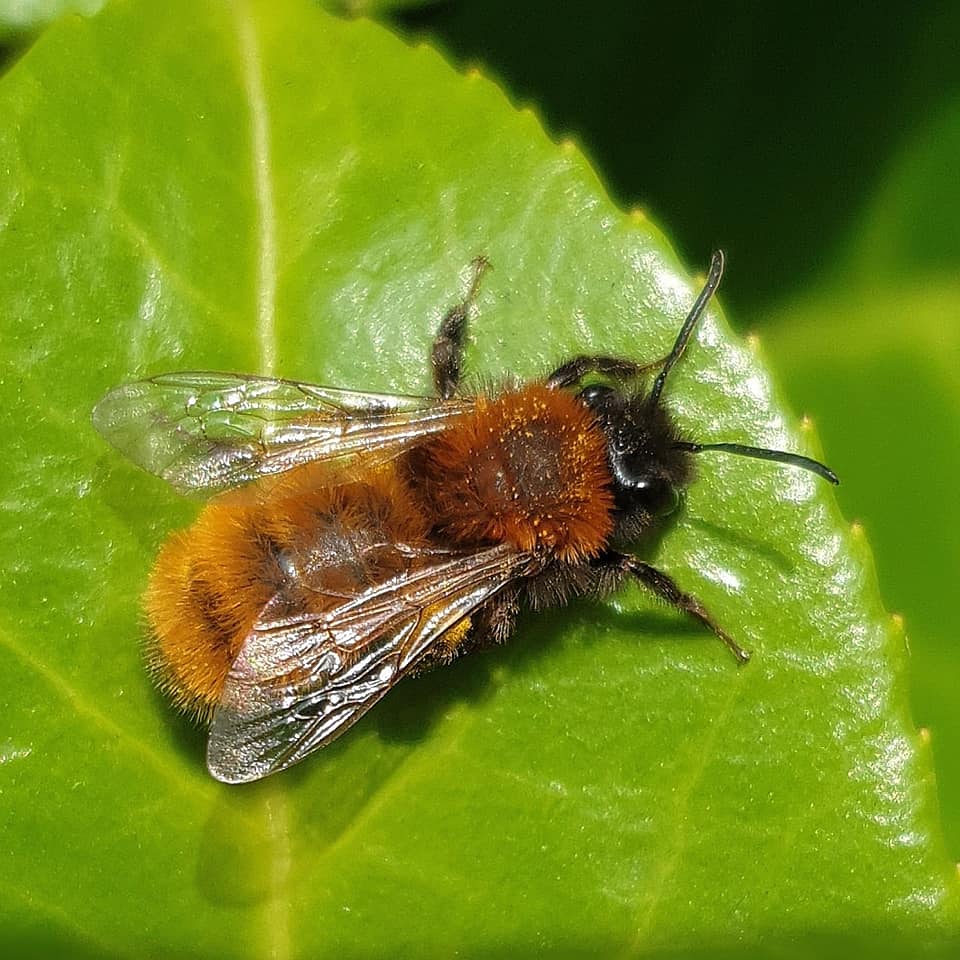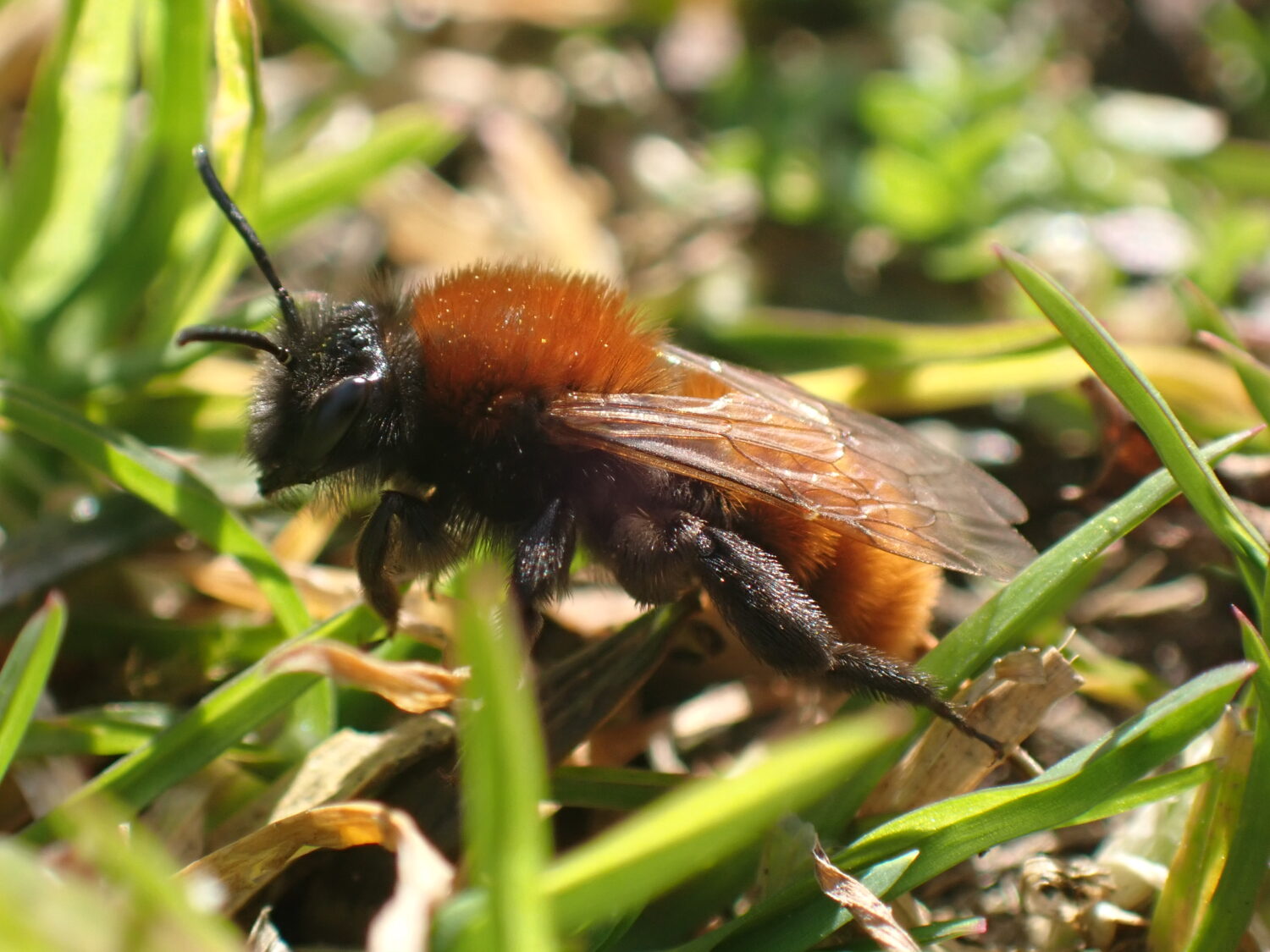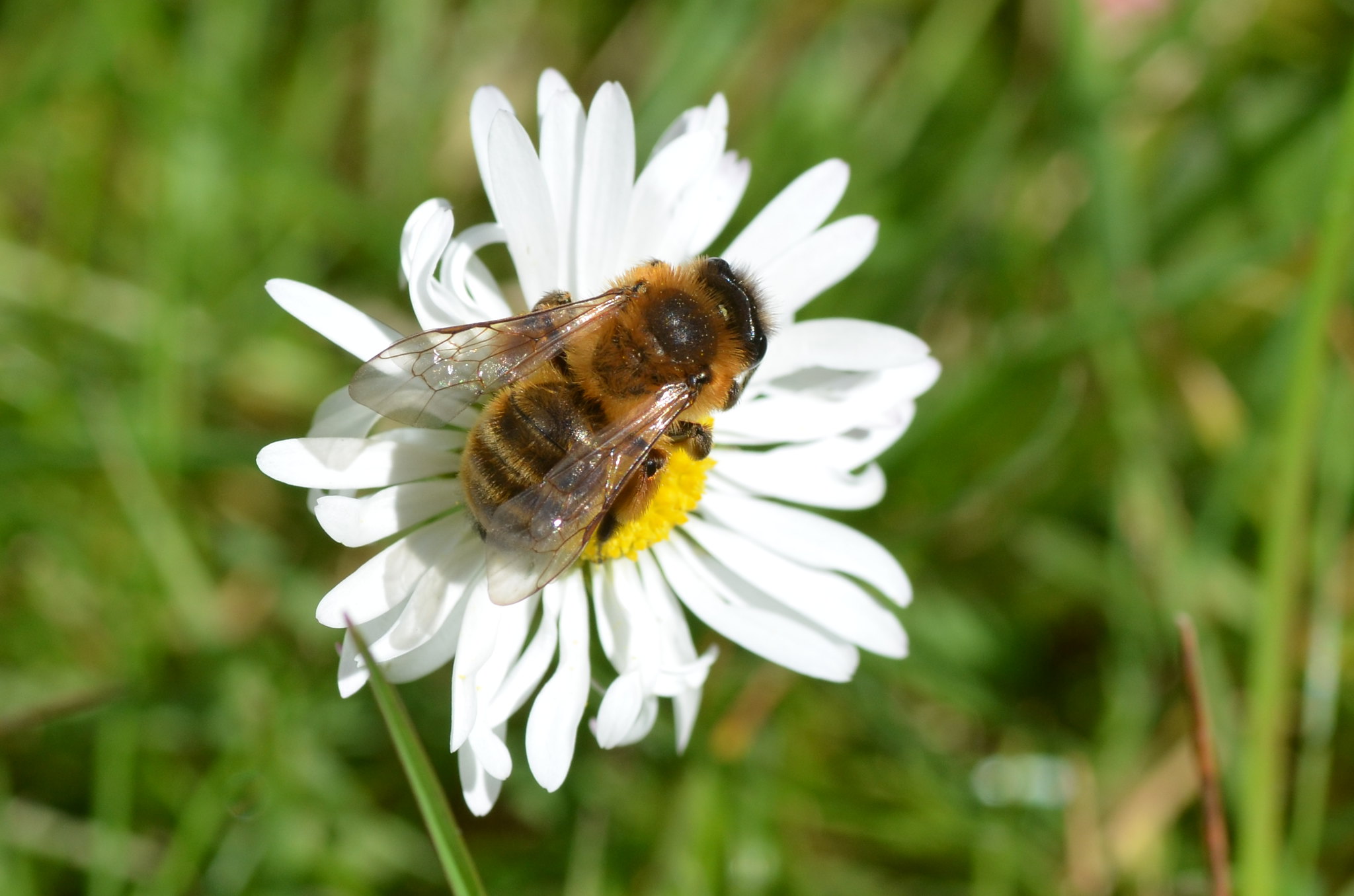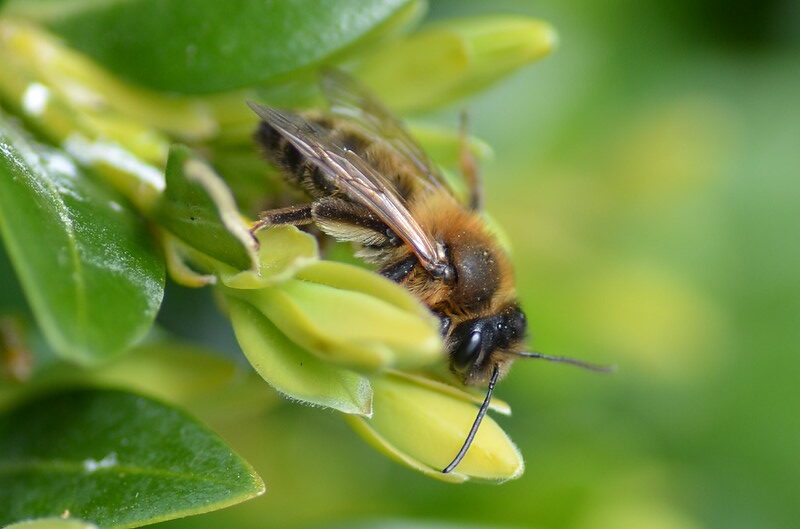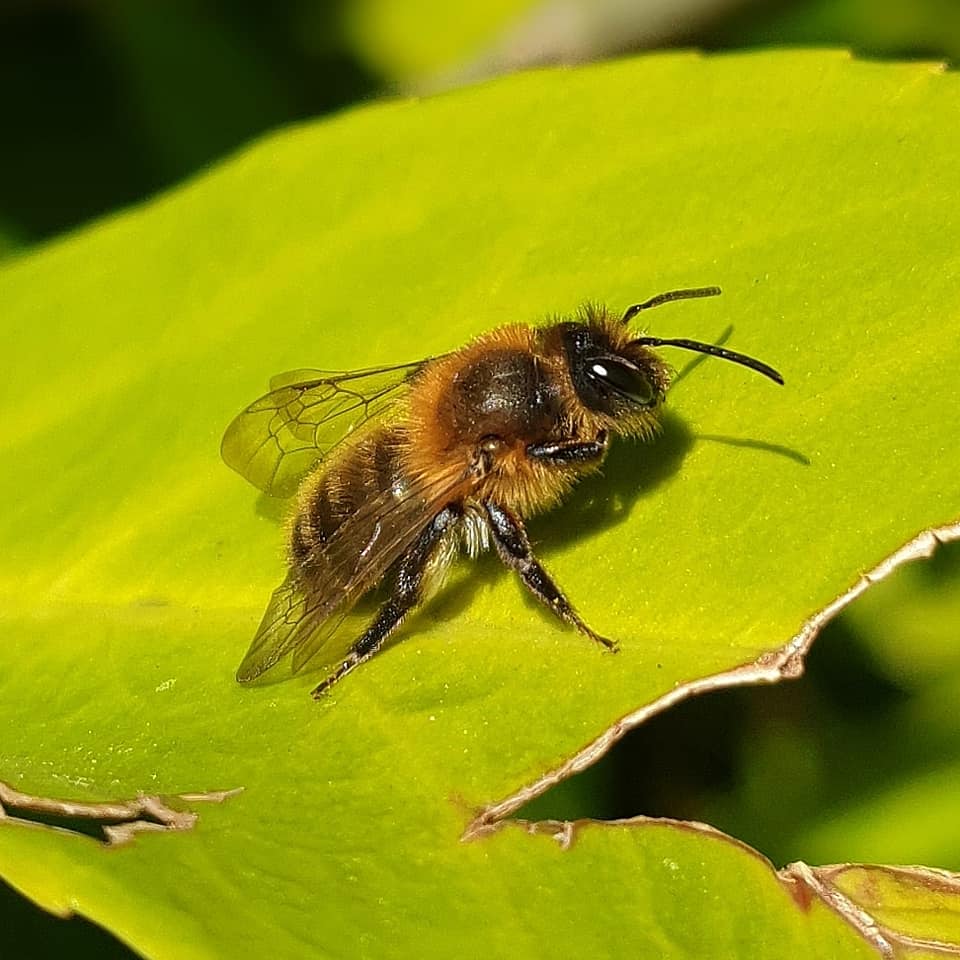Charlotte Rankin, NHSN Conservation Officer, introduces you to three distinctive mining bees that can be observed during spring.
Mining Bees are a group of solitary bees that characteristically ‘mine’ into the earth to create their nest burrows. Mining Bees are the largest group of solitary bees and in the North East, there are around 25 species known from the region. Many are on the wing during springtime and several of these spring-flying species were submitted to the North East Bee Hunt in 2020. These species can appear similar, but the distinctive females have key features to look out for. This post takes a closer look at the females of three species of Mining Bee that can be found in your garden.
Tawny Mining Bee Andrena fulva
When fresh, the honeybee-sized females have a dense fox-coloured coat that contrasts strongly with the black-haired legs. Females also have black-haired sides of the thorax and head.
When not covered in pollen, the hind legs are completely black-haired unlike the next two species of Mining Bee. Over time, the coat can fade and become worn to lose the distinctive fox colour.
Females can be found nesting in bare ground, short lawns and ornamental flowerbeds. These bees leave a characteristic mound of spoil around their nest entrances that resemble mini-volcanoes. Females can also be found nesting close together in aggregations.
Buffish Mining Bee Andrena nigroaenea
The honeybee-sized females are densely furred with a gingery-brown or “buffish” coat. A key feature to look out for is the bright orange brush of hairs on the hind legs. This orange brush is used to collect pollen.
Without looking at the hind legs, this species appears very similar to the next species, the Chocolate Mining Bee.
Females tend to nest in bare ground and short turf, and often nest close together in aggregations. The nesting aggregation of Buffish Mining Bees at the Spetchells in Prudhoe is estimated to be over 100,000 bees.
Chocolate Mining Bee Andrena scotica
The honeybee-sized females have a brown-haired coat. This species looks very similar to the Buffish Mining Bee and the key feature to separate the two species is the colour of hair on the hind legs.
The Chocolate Mining Bee has black hairs above and a brush of white hairs below, unlike the Buffish Mining Bee who has a bright orange brush of hairs.
When taking photographs of Chocolate and Buffish Mining Bees, it is useful to try to capture the hind legs to aid identification.
Chocolate Mining Bees can be found nesting singly or close together in aggregations. Females can also be found using a communal entrance to access their own nest burrows.
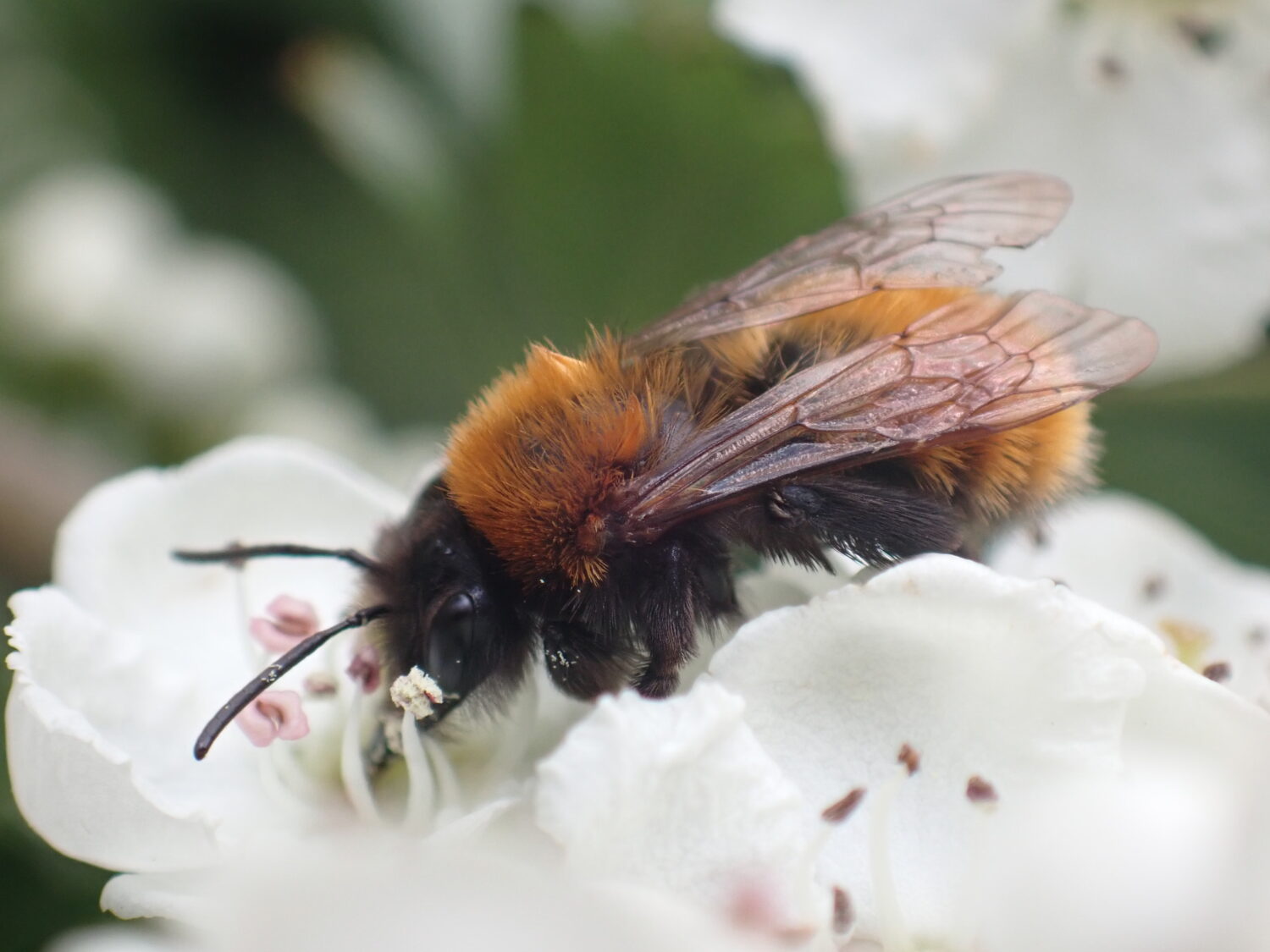
Spotted these bees?
Share your sightings of these spring-flying bees to contribute to the conservation and study of our region’s bees.
